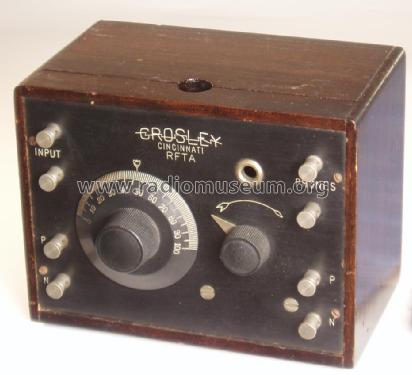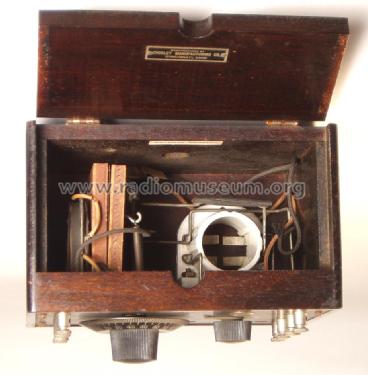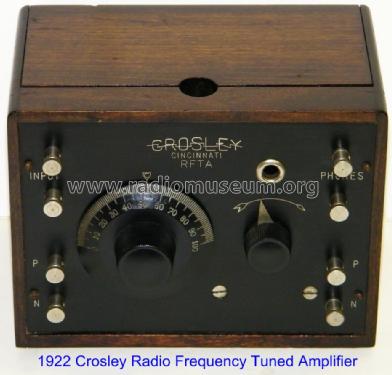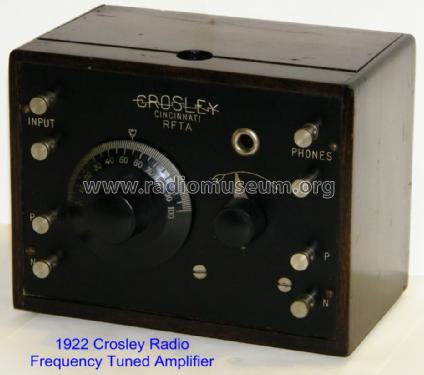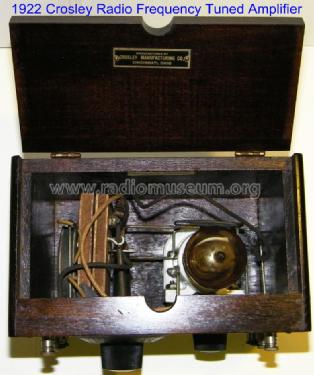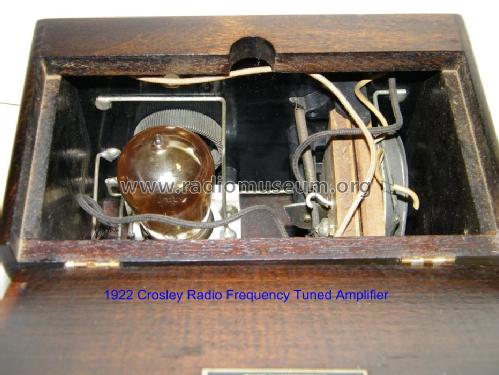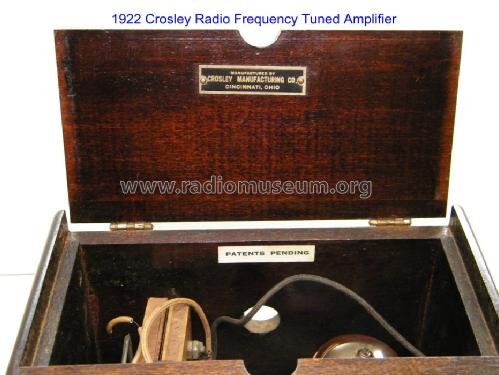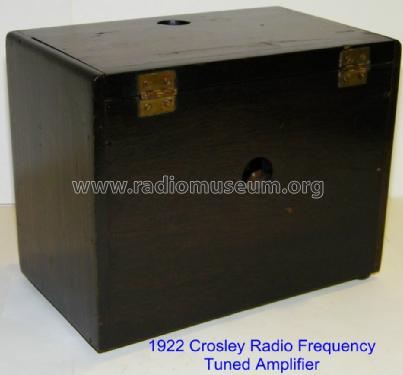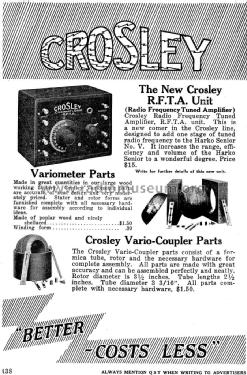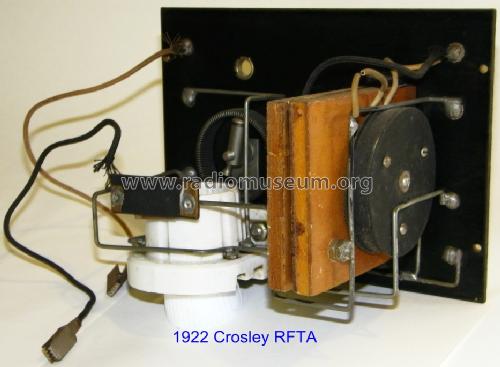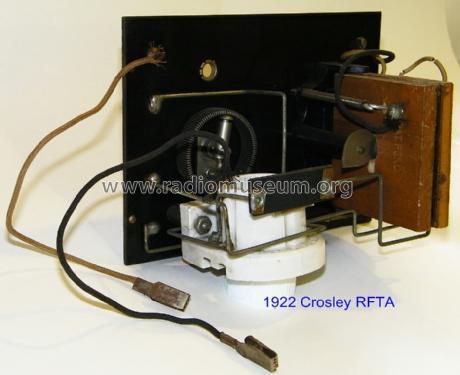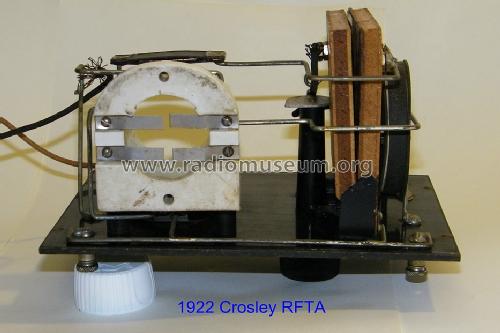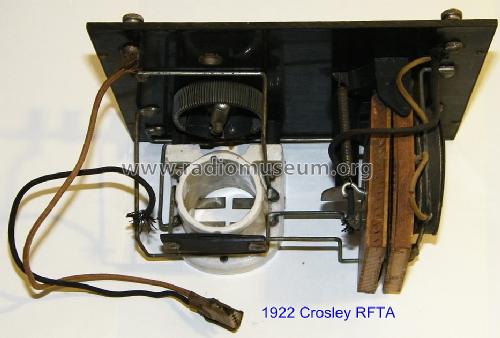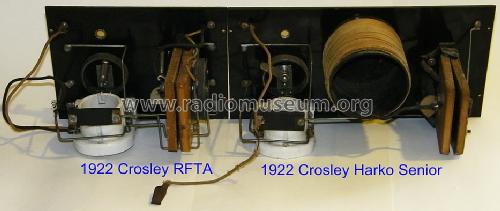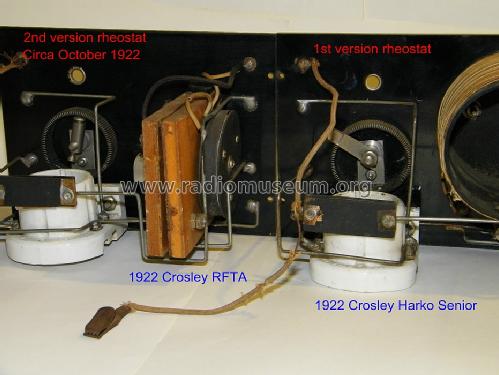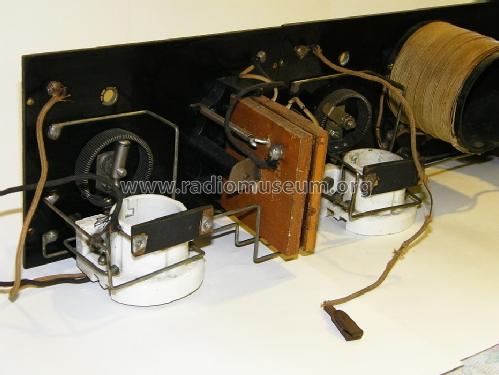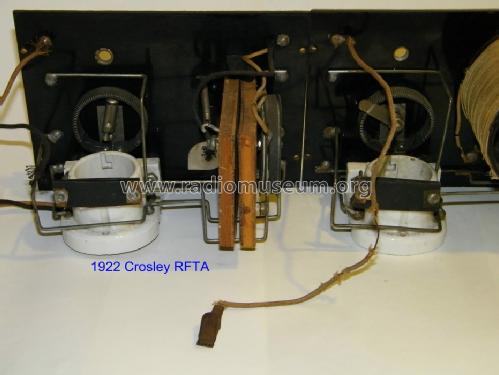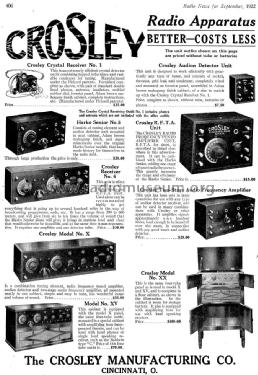Radio Frequency Tuned Amplifier RFTA (Amp., R.F.T.A Unit)
Crosley Radio Corp.; Cincinnati (OH)
- Country
- United States of America (USA)
- Manufacturer / Brand
- Crosley Radio Corp.; Cincinnati (OH)
- Year
- 1922
- Category
- RF (Radio Frequency-) Amplifier
- Radiomuseum.org ID
- 36598
- Number of Tubes
- 1
- Main principle
- Radio Frequency Amplification only
- Wave bands
- Broadcast only (MW).
- Power type and voltage
- Storage and/or dry batteries
- Loudspeaker
- - - No sound reproduction output.
- Material
- Wooden case
- from Radiomuseum.org
- Model: Radio Frequency Tuned Amplifier RFTA - Crosley Radio Corp.;
- Shape
- Tablemodel, Box - most often with Lid (NOT slant panel).
- Dimensions (WHD)
- 7.5 x 6 x 5 inch / 191 x 152 x 127 mm
- Notes
- Introduced in July of 1922 the Crosley RFTA was designed to add one stage of radio frequency amplification to the non-regenerative Harko Senior thereby increasing range and volume. The RFTA being tuned works efficiently over a band of wavelengths from 200 to almost 600 meters. When this unit is used in connection with the non-regenerative Harko Senior (in front), an amplifier tube is used in the Harko Senior Unit - with the grid leak and condenser bridged or short circuited. The detector tube is then placed in the radio frequency unit RFTA, thus this new unit contains the radio frequency tuner and the detector tube and its control. The reason for this trick is given here. Three different combinations were proposed by Crosley in 1922 for RFTA.
Here is a link to some sources for this model.
- Price in first year of sale
- 15.00 $
- External source of data
- Ernst Erb
- Source of data
- Radio Collector`s Guide 1921-1932
- Literature/Schematics (3)
- July 1922 QST advertisement page 138
- Literature/Schematics (4)
- -- Original prospect or advert (Data from original late 1922 catalog.)
- Other Models
-
Here you find 1813 models, 1053 with images and 1306 with schematics for wireless sets etc. In French: TSF for Télégraphie sans fil.
All listed radios etc. from Crosley Radio Corp.; Cincinnati (OH)
Collections
The model Radio Frequency Tuned Amplifier is part of the collections of the following members.
Forum contributions about this model: Crosley Radio Corp.;: Radio Frequency Tuned Amplifier RFTA
Threads: 1 | Posts: 3
RFTA a mystery?
The RFTA is mainly intended to improve the humble sensitivity of HARKO Senior. But:
1) The HARKO Senior input is not ground connected, it is a series circuit of C and L. That means it is an open circuit for DC, which excludes its use as a plate load for a preamp. All the V/5 family is alike as far as I know.
2) ±A is routed through (marked P = positive? while N = negative) on RFTA but not on HARKO Senior. HARKO Senior's missing terminals at the left side mean that Harko is clearly a front end unit.
3) Another strangeness: why is the output of an RF amplifier marked "PHONES"?? and why did they add the audion capacitor of ca 300 pF?
In technical terms the name RFTA appears misleading.
Used as a preamp in combination with a simple receiver: how would the latter be hooked up? possibly to "Phones", but that sounds strange although it might work, provided the receiver input shows continuity for DC (which in those days was seldom the case, series tuning was preferred) to accept antennas with high capacity).
and why the P and N terminals at left hand?
As a phone booster the RFTA would hardly work, since its tuning circuit might not accept audio signals at the input, and 300 pF are not enough for audio signals.
Now marketing comes in: The name RFTA describes its overall function: to improve Harko Senior .Using the "real" technical name, it would not be understood why one should combine two TRF-Audions! The easy adaptation procedure was clearly explained.
How the combination RFTA + HARKO Senior works see here.
Konrad Birkner † 12.08.2014, 17.Feb.12
